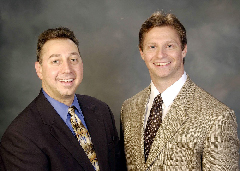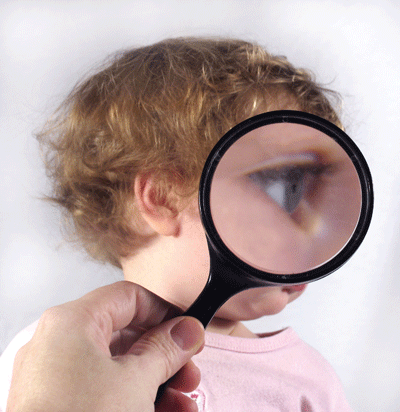In fact, pediatric use for most glaucoma drugs is not recommended.2 Here is what evidence-based medicine says about the use of the most common glaucoma medications in children.

Because some children with glaucoma will still require medical pressure reduction after surgery, knowledge of which medications are safe and effective is invaluable.
Beta-Blockers
For many years, beta-blockers were the cornerstone of management for adult primary open-angle glaucoma. Their mechanism of action is the reduction of aqueous production. However, use of beta-blockers in adults has been decreasing due to the systemic risks, such as adverse cardiovascular events, associated with these agents. This drug category is also often avoided in children because of potential systemic risks.
But, some studies show topical beta blockers to be an effective and safe therapy for children.3-9 In one study, for example, 45% of children on topical timolol demonstrated a 10mm Hg reduction in IOP.3 However, another study noted that while timolol reduced IOP in pediatric patients by approximately 25%, no patients glaucoma was controlled on this drug alone. Adverse effects in this study were low, although 7% of patients required timolol cessation.4 In a separate study involving 50 pediatric patients, only 4% developed systemic side effects.5
Finally, in a study of 34 children, the addition of timolol to maximally tolerated medical therapy improved IOP in 10 patients, caused modest or equivocal improvement in 11 and caused no substantial benefit in 13 patients. Children older than age five showed an average reduction in resting pulse rate of six beats per minute, but those younger than five demonstrated no change in resting pulse rate. Only one patient was discontinued from timolol for an adverse effect not cited.6
Prostaglandin Analogs
Prostaglandin analogs represent the newest and most effective class of IOP-lowering medications. They employ a novel approach to IOP reduction by increasing uveoscleral outflow. Prostaglandins have become a favorite among practitioners due to their superior efficacy and excellent safety profile in adults. Although prostaglandin analogs are safe in children, they have not demonstrated a similar efficacy.10
In one study of 31 children treated with latanoprost, the average IOP reduction was only 0.2mm Hg. A total of 80% of the children were non-responders (<15% IOP reduction with latanoprost). Of the 20% who did respond, those children were of an older cohort (average age of 7.1 years) and tended to have juvenile open-angle glaucoma. Latanoprost was well tolerated both ocularly and systemically by all.11
Another study revealed greater IOP reduction than that of the previous study in children taking latanoprost. However, this study population had an age range of 12 to 18.12 In a report on pediatric glaucoma associated with port-wine stain, IOP control was achieved in only 50% of children treated with latanoprost.13 A similar study showed that latanoprost is effective in only a minority of pediatric glaucoma cases.14
Prostaglandin analogs appear to be safe and well tolerated, but unfortunately not very effective in the entire pediatric glaucoma population. Older children with juvenile onset open-angle glaucoma demonstrated the best efficacy.
Alpha-2 Adrenergic Agonists
Brimonidine, a selective alpha-2 agonist, is the most commonly prescribed medication within this family. The mechanism of action is thought to be the reduction of aqueous production with some possible enhancement of uveoscleral outflow. When used as a primary or adjunctive agent, brimonidine has been shown to reduce IOP in children by 5mm Hg.15,16
However, this medication has demonstrated an unacceptable level of adverse events in children.15-20 Lo-cal adverse reactions, such as stinging and burning, were voiced by 52% of children using brimonidine, according to one study.15 The overall adverse event rate for children using brimonidine was 84% in an-other study.16
Brimonidine crosses the blood-brain barrier and potentially affects the central nervous system (CNS).17 CNS effects of brimonidine are potentially more serious than local adverse reactions; the most notable of these in children has been lethargy and somnolence.15-20 Somnolence has ranged from 17% to as much as 76%.15-17 One study noted that brimonidine induced fainting in two children.19 Another study reported brimonidine use inducing a coma in one child.20 Despite the efficacy of brimonidine, the side effect profile in children appears unacceptable.
|
Our Therapeutic Ladder for Children with Glaucoma |
| Topical CAI Beta-blocker (typically betaxolol) Prostaglandin analog if the child is older (this class may not work in younger children) |
Carbonic Anhydrase Inhibitors
This drug class enzymatically reduces the production of aqueous. Modestly effective in adults, this class is not frequently used in children. However, studies of both oral and topical carbonic anhydrase inhibitors (CAIs) have demonstrated efficacy and tolerability in children.21-24
Acetazolamide has long been used in the management of pediatric glaucoma. Some researchers have attempted a switch from the oral to the topical route. One study revealed that topical dorzolamide did not work as well as oral acetazolamide, though topical dorzolamide did provide a significant IOP reduction in the pediatric group and was well tolerated.23 Another study revealed a similar efficacy between topical dorzolamide and oral acetazolamide without any adverse effects and concluded that topical CAIs can potentially replace oral CAIs in the management of pediatric glaucoma.22 In a third study, topical dorzolamide was well tolerated, with a local adverse reaction rate of 3% and an IOP reduction of up to 23% in children younger than age six.21
So, topical CAIs may be unnecessarily overlooked for the management of pediatric glaucoma.
While it may not be common to see children who have glaucoma in a primary-care practice, knowing which medications are safe and beneficial is a crucial aspect of managing these youngsters, should they ever present to you.
Drs. Kabat and Sowka are members of Alcons speakers alliance. They have no financial interest in any of the products mentioned.
1. Tanimoto SA, Brandt JD.Options in pediatric glaucoma after angle surgery has failed. Curr Opin Ophthalmol 2006 Apr;17(2):132-7.
2. Chung I, Buhr V. Topical ophthalmic drugs and the pediatric patient. Optometry 2000 Aug;71(8):511-8.
3. Hoskins HD Jr, Hetherington J Jr, Magee SD, et al. Clinical experience with timolol in childhood glaucoma. Arch Ophthalmol 1985 Aug;103(8):1163-5.
4. McMahon CD, Hetherington J Jr, Hoskins HD Jr, et al. Timolol and pediatric glaucomas. Ophthalmology 1981 Mar;88(3): 249-52.
5. Zimmerman TJ, Kooner KS, Morgan KS. Safety and efficacy of timolol in pediatric glaucoma. Surv Ophthalmol 1983 Dec;28 Suppl:262-4.
6. Boger WP 3rd, Walton DS. Timolol in uncontrolled childhood glaucomas. Ophthalmology 1981 Mar;88(3):253-8.
7. Talbot AW, Russell-Eggitt I. Pharmaceutical management of the childhood glaucomas. Expert Opin Pharmacother 2000 May;1(4):697-711.
8. van Emelen C, Goethals M, Dralands L, et al. Treatment of glaucoma in children with Sturge-Weber syndrome. J Pediatr Ophthalmol Strabismus 2000 Jan-Feb;37(1):29-34.
9. Koraszewska-Matuszewska B. Pharmacotherapy of congenital glaucoma in young children. Klin Oczna 1999;101(5):393-6.
10. Enyedi LB, Freedman SF. Latanoprost for the treatment of pediatric glaucoma. Surv Ophthalmol 2002 Aug;47 Suppl 1: S129-32.
11. Enyedi LB, Freedman SF, Buckley EG. The effectiveness of latanoprost for the treatment of pediatric glaucoma. J AAPOS 1999 Feb;3(1):33-9.
12. Urban B, Bakunowicz-Lazarczyk A, Mrugacz M, et al. The effectiveness of latanoprost for the treatment of pediatric glaucoma. Klin Oczna 2004;106(1-2 Suppl):243-4.
13. Ong T, Chia A, Nischal KK. Latanoprost in port wine stain related paediatric glaucoma. Br J Ophthalmol 2003 Sep;87(9):1091-3.
14. Ravinet E, Mermoud A, Brignoli R. Four years later: a clinical update on latanoprost. Eur J Ophthalmol 2003 Mar;13(2):162-75.
15. Montero-de-Espinosa I, Morales C, Marquez-de-Aracena R. Ocular hypertension in children treated with brimonidine 0.2%. A clinical study. Arch Soc Esp Oftalmol 2006 Mar;81(3):155-60.
16. Al-Shahwan S, Al-Torbak AA, Turkmani S, et al. Side-effect profile of brimonidine tartrate in children. Ophthalmology 2005 Dec;112(12):2143.
17. Enyedi LB, Freedman SF. Safety and efficacy of brimonidine in children with glaucoma. J AAPOS 2001 Oct;5(5):281-4.
18. Levy Y, Zadok D. Systemic side effects of ophthalmic drops. Clin Pediatr (Phila) 2004 Jan-Feb;43(1):99-101.
19. Bowman RJ, Cope J, Nischal KK. Ocular and systemic side effects of brimonidine 0.2% eye drops (Alphagan) in children. Eye 2004 Jan;18(1):24-6.
20. Berlin RJ, Lee UT, Samples JR, et al. Ophthalmic drops causing coma in an infant. J Pediatr 2001 Mar;138(3):441-3.
21. Ott EZ, Mills MD, Arango S, et al. A randomized trial assessing dorzolamide in patients with glaucoma who are younger than 6 years. Arch Ophthalmol 2005 Sep;123(9):1177-86.
22. Rehurek J, Vancurova J. Trusopt, a local carboanhydrase inhibitor, in the treatment of glaucoma in children (preliminary report). Cesk Slov Oftalmol 1998 Apr;54(2):82-5.
23. Portellos M, Buckley EG, Freedman SF. Topical versus oral carbonic anhydrase inhibitor therapy for pediatric glaucoma. J AAPOS 1998 Feb;2(1):43-7.
24. Rehurek J, Spicarova R, Vancurova J. Effect of Trusopt on normal intraocular pressure values in children. Cesk Slov Oftalmol 2000 Oct;56(6):366-9.

